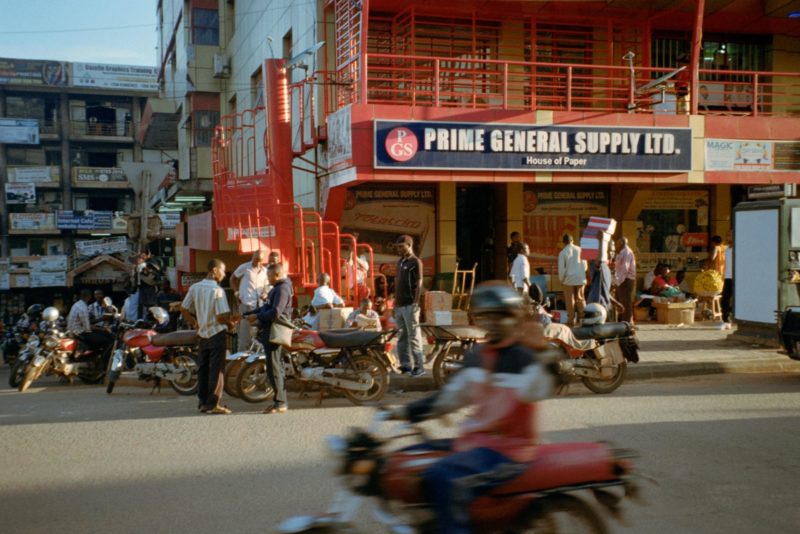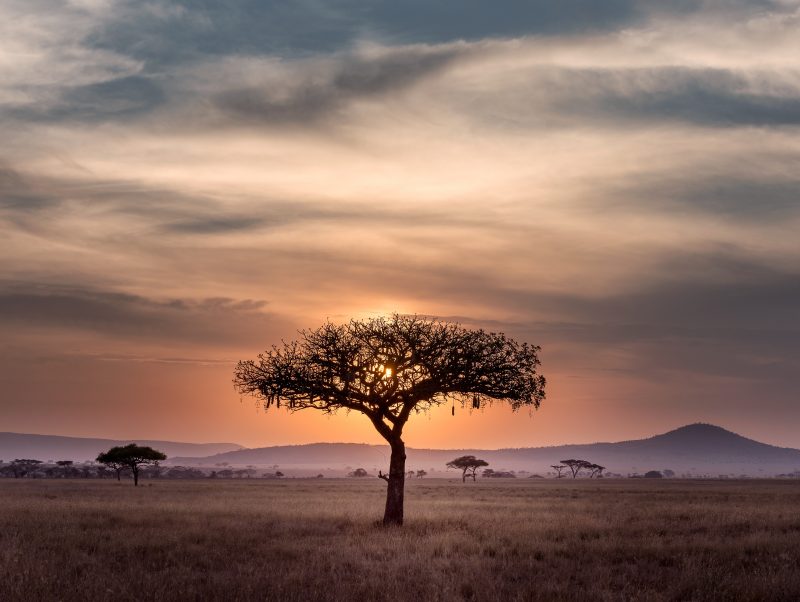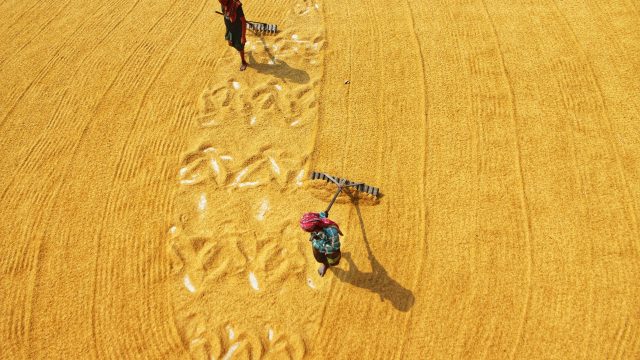Greening Uganda's COVID-19 recovery: walking the talk
Managing Uganda's natural capital is an essential part of a sustainable green recovery. Part of the GEC Insights series.

The GEC Insights series is a curated collection of articles at the intersection of environment and economics, each written by leading thinkers from the worlds of business, government and civil society. Part of our Economics for Nature project, they bring together diverse perspectives to answer the question: how can we re-design our economies to protect and restore nature?
Although the path of the COVID-19 pandemic remains unclear, marred with resurgences and uneven vaccination, economic recovery efforts across the globe are gaining momentum. This recovery is uneven and lower income economies are trailing, as the COVID-19 pandemic considerably dampened progress towards impressive global socioeconomic transformation prospects outlined in the 2030 Agenda on Sustainable Development.
Since the pandemic is partly rooted to an unhealthy planet and biodiversity loss that fuels zoonotic diseases such as COVID-19, questions must be asked regarding natural capital management. Economies in general are dependent on nature, and Uganda’s particularly so. More than half of the world’s GDP is moderately or highly dependent on nature and its services, yet a staggering one fifth of countries are at risk of their ecosystems collapsing due to a decline in biodiversity and related ecosystem services. To get a clearer picture, it is imperative to look into specific country level recovery packages to gauge their green intensity.
A background of stagnation
For low income countries like Uganda, the pandemic coincided with a new planning cycle (the Third five-year National Development Plan) which focused on increasing household incomes and improving quality of life. This goal was motivated by the noticeable contrast between a growing stock of quality infrastructure yet accompanied by increasing income poverty and a stagnant quality of life.
Despite the macro-level progress registered by the previous two five-year development plans between 2010 and 2019 (a twofold expansion of the economy, a significant growth in remittances from US$819 million to US$1.4 billion, and doubling electricity access from 11 percent to 24 percent among others), household income poverty continued to increase and 68 percent of households were still stuck in subsistence agriculture. Therefore, the inability to reap socioeconomic transformation from immense infrastructure investments fueled the need to focus more on the households to ameliorate living standards and quality of life.
Equally important, natural capital indicators had performed dismally, registering reversals in some cases, raising questions on whether the impressive macro-economic progress came at the expense of natural resources. Forest coverage dipped from 15 percent in 2013/14 to a 12 percent by 2019/20, wetland coverage dropped from 10 percent in 2013/14 to 8.9 in 2019/20 while air quality index Particulate Matter (PM2.5) for Kampala City spiked to perilous levels estimated at 162μg/m3—six times higher than the World Health Organization recommended ambient air quality index of 25μg/m3.
“ The economic value of natural capital is still underappreciated, exacerbated by market failures that under-price ecological goods and services.”
Fortunately, the new planning cycle outlined in Uganda’s Third National Development Plan provides a ray of hope through its impressive natural capital responsive targets.
A false dawn?
However, the onset of the COVID-19 pandemic cut short the revived natural capital management responses. Relatedly, the misleading inadvertent natural capital gains such as cleaner air and water resources registered in the earlier stages of the pandemic owing to reduced economic activity falsely presented natural capital as the winner from the pandemic.
Besides adding to existing vulnerabilities such as economic inequality, the pandemic eroded socioeconomic gains with Uganda projected to have about two million additional people falling back into poverty. In the face of an ailing economy, a pandemic whose cause was traced to biodiversity loss and categorized as a zoonotic disease and a sick planet with one million species on the verge of extinction by the end of this century, it was clear that a multi-faceted green recovery that went beyond reviving the economy to supporting sustainable natural capital management and arresting biodiversity loss was needed.
Indeed, the recovery response was strong, manifested by large recovery plans and budgets. The European Union earmarked €2.018 trillion, the USA US$1.9 trillion, and Uganda US$12 billion and 12.1 billion in financial years 2020/21 and 2021/22 respectively. This presented a rare window of opportunity to reconcile the persistent tradeoff between the economy and the planet through pragmatic fiscal, investment, and monetary decisions. While several countries verbally jumped on the green recovery agenda, a review of several recovery packages indicates that plans have not translated into real fiscal and investment decisions that work for natural capital management.
Walking the talk on green
Uganda’s COVID-19 relief and recovery packages were in the form of national budgets for financial years 2020/21 and 2021/22, with natural capital sustainability prioritised. However, as recovery plans and packages have been rolled out, it emerged that the prioritisation of a green recovery in budget planning and estimates was not translating into actual allocations for implementation. Green recovery budgets have been revised with natural capital relevant interventions receiving the last call on financial resource allocation due to the mythical perceived limited multiplier effect on economic recovery.

A review of Uganda’s first recovery package for financial year 2020/21 indicated impressive compliance with natural capital management. Its implementation in terms of actual financial releases, however, departed from the initial balance between economy, society and environment to a higher amount given towards the economy. The follow-up recovery budget for the financial year 2021/22 had an impressive amount dedicated to natural capital management.
Whilst the mainstream natural capital responsive programme registered a slight decline from 3.2 percent in 2020/21 to 3 percent in 2021/22 as a percentage of the total budget, this was compensated by effective natural capital integration across the remainder 17 programmes in the budget. Unfortunately, due to a COVID-19 resurgence (second wave) towards the end of the last financial year (2020/21) the first quarter budget disbursements for financial year 2021/22 suffered a 40 percent budget cut in terms of actual financial resources releases against the formerly approved figures, further sidelining the green components earlier captured in the budget.
Worryingly, the revenue collection out-turn for the first quarter of this financial year (2021/22) has already registered a 10 percent shortfall estimated at US$140.3 million against the set revenue collection target. This will further dampen budget credibility in terms of outturn matching with the releases since a revenue shortfall usually indicates that interventions deemed to have a higher short term multiplier effect on economic recovery, poverty alleviation and income poverty will come first in resource allocation during the reprioritization.
Natural capital management interventions such as the restoration of degraded ecosystems are perceived to generate long term results and are likely to end up on the periphery of resource allocation, diluting the green intensity of the recovery. Also, the economic value of natural capital is still underappreciated, exacerbated by market failures that under-price ecological goods and services.
Pathways to a greener recovery
The uncertain path of the pandemic continues to weaken budget credibility, something that is working against a greener recovery. It is premature to celebrate a green recovery based only on a myriad of green responsive recovery plans. Achieving a green recovery will require going beyond planned commitments to actual implementation of green interventions. Green recovery wins can only be registered if the green budget outputs stipulated by recovery packages are backed up with actual financial release and expenditure.
“ Achieving a green recovery will require going beyond planned commitments to actual implementation of green interventions. Green recovery wins can only be registered if the green budget outputs stipulated by recovery packages are backed up with actual financial release and expenditure.”
Therefore, budget out-turns (percentage of approved budget released) and expenditure out-turns (percentage of released budget spent by the recipient agency) ought to be factored into the green recovery measurement equation. he green recovery should be fortified with clear measurable actions that will generate transformative results to reverse biodiversity loss and ensure sustainable natural capital management.
These may include:
Creating natural capital responsive fiscal reforms that foster accurate valuation and pricing of ecological goods and services to circumvent prevailing market failures that under-price natural capital.
Building new strategic partnerships between state and non-state actors with clarity on roles regarding institutionalisation of sustainable natural capital management and the financing thereof. In selected cases, non-state actors such as the Advocates Coalition for Development and Environment have deliberately deployed resources to nurture and foster both a green recovery and an accelerated transition to a green economy. These partnerships ought to be strengthened.
Repackaging natural capital management interventions to generate multifaceted spillovers that contribute to economic recovery through job creation, food security and poverty alleviation. For instance, establishing commercial orchards, licensing tree seedling nursery developers and distributors, engaging communities in afforestation activities in degraded forestry ecosystems at a fee, and establishing woodlot plantations as biomass energy sources to reduce pressure on tropical rainforests.
Integrating natural capital accounting in national accounting systems to track the stocks and flows of natural capital against economic and social progress. This will build a policy economic case for increased budgeting to natural capital management.
These interventions will go a long way to ensure that natural capital management interventions are not omitted during budgetary reprioritization processes caused by the after effects of the pandemic such as revenue shortfalls. This is because they will align natural capital interventions to the prioritisation metrics defined by the contribution to economic recovery through revenue generation, job creation, food security and poverty alleviation, but still enhancing natural capital, and helping to bring a real green recovery to fruition.
- Aron Werikhe, Green Economy Focal Person at the Ugandan National Planning Authority


